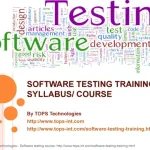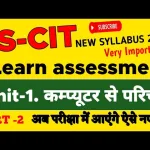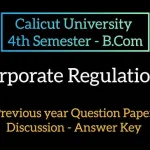The Sanganak syllabus is meticulously designed to prepare students for the evolving demands of the technological world. As we move into 2025, the curriculum focuses on providing a deep understanding of both fundamental and advanced concepts in computer science and information technology. This guide is crafted to help students navigate through the syllabus, understand its structure, and utilize it to maximize their learning and success in examinations.
Section-by-Section Breakdown
Module 1: Introduction to Computing
-
Topics Covered: History of Computing, Basic Computer Operations, Introduction to Software and Hardware.
-
Skills Developed: Students will gain foundational knowledge of computer systems and understand the interplay between hardware and software components.
-
Examination Pattern: Multiple-choice questions (MCQs) and short answer questions, 20% of total marks.
Module 2: Programming Fundamentals
-
Topics Covered: Algorithms, Flowcharts, Basics of Programming Languages (Python, Java), Data Types and Variables.
-
Skills Developed: Critical thinking through problem-solving and basic programming skills.
-
Examination Pattern: Practical coding questions, MCQs, 30% of total marks.
Module 3: Data Structures and Algorithms
-
Topics Covered: Arrays, Linked Lists, Stacks, Queues, Sorting and Searching Algorithms.
-
Skills Developed: Ability to design efficient algorithms and understand data organization.
-
Examination Pattern: Long answer questions, code analysis, 25% of total marks.
Module 4: Databases and Information Management
-
Topics Covered: Database Design, SQL Queries, Normalization, and Transaction Management.
-
Skills Developed: Skills in managing and organizing data effectively.
-
Examination Pattern: SQL query writing, database design questions, 25% of total marks.
Recommended Study Materials
-
Books: “Introduction to Computing” by Peter Norton, “Programming in Python” by Mark Lutz, “Data Structures and Algorithms Made Easy” by Narasimha Karumanchi.
-
Online Resources: Codecademy for hands-on programming practice, Coursera and edX for theoretical courses, Stack Overflow for community support and problem-solving.
Examination Tips and Study Plan
To excel in the 2025 Sanganak syllabus, students should:
-
Study Plan: Dedicate specific weeks to each module, revising topics and practicing problems regularly.
-
Exam Preparation: Focus on past examination papers to understand the question pattern and frequently tested concepts.
-
Organization Tips: Keep notes organized by modules, use planners for deadlines, and set clear goals for each study session.
FAQ for Sanganak Syllabus
Q1: How often is the Sanganak syllabus updated? A1: The Sanganak syllabus is typically reviewed and updated every three to five years to incorporate new technological advancements and educational standards.
Q2: Are there any specific programming languages I need to focus on for the 2025 syllabus? A2: Yes, Python and Java are emphasized due to their widespread use in education and industry.
Q3: What is the best way to prepare for practical coding exams? A3: Regular practice is key. Utilize platforms like Codecademy and GitHub to write, test, and refine your coding skills.
Q4: Can I use online forums like Stack Overflow during my study? A4: Absolutely, engaging with community forums can help clarify doubts, share knowledge, and find solutions to common programming problems.
Q5: Is group study recommended for the Sanganak syllabus? A5: Group study can be very beneficial, especially for discussing and solving complex problems and understanding different approaches to the same problem.
This friendly and clear guide should serve as a roadmap through the Sanganak syllabus, helping students organize their studies effectively and embrace the challenges of their academic journey with confidence.
Latest Posts
- Step-by-step guide to download and apply for jee mains admit card 202
- Comprehensive 2025 government holidays and recruitment details for job seekers
- JEE Mains Admit Card 2025: Your Step-by-Step Guide to Downloading the Hall Ticket
- Everything You Need to Know About 2025 Government Holidays Recruitment
- Comprehensive Guide to rrb d group recruitment 2025 – Eligibility, Vacancies, and Application
- Detailed guide to nps trust recruitment 2025 vacancies, eligibility and apply process
- Comprehensive guide to hpcl recruitment 2025 notification, vacancies, and application process
- ignou bed admission 2025 complete recruitment guide with eligibility and process
- Comprehensive Guide to Indian Army Agniveer Recruitment 2025 Notification and Jobs
- Everything You Must Know About CBSE Board Exams 2025 Changes & New Rules






